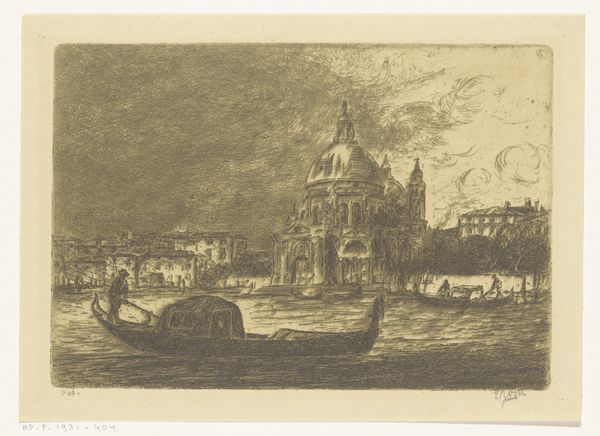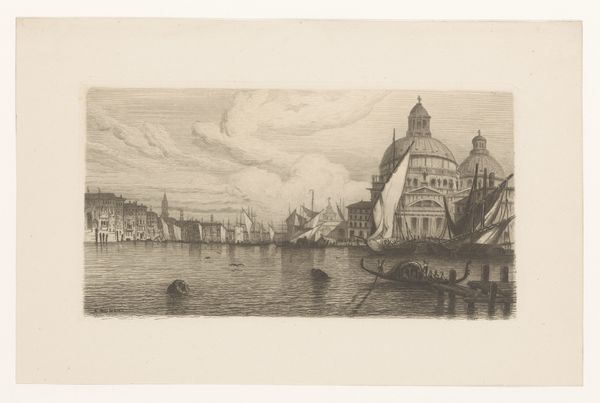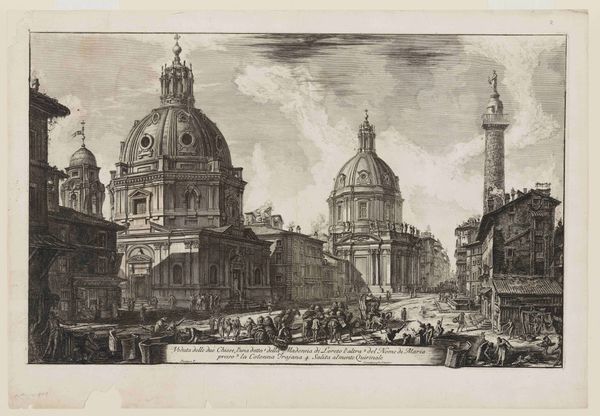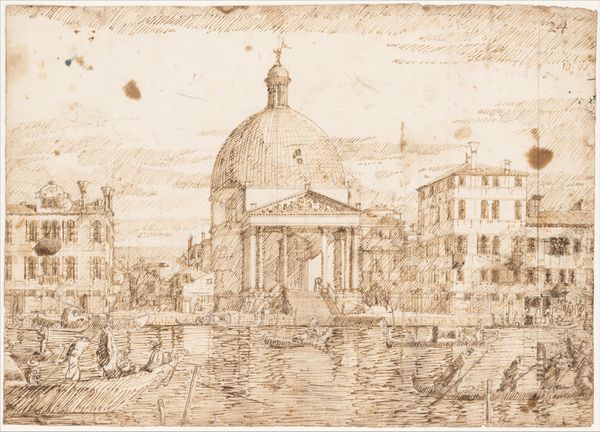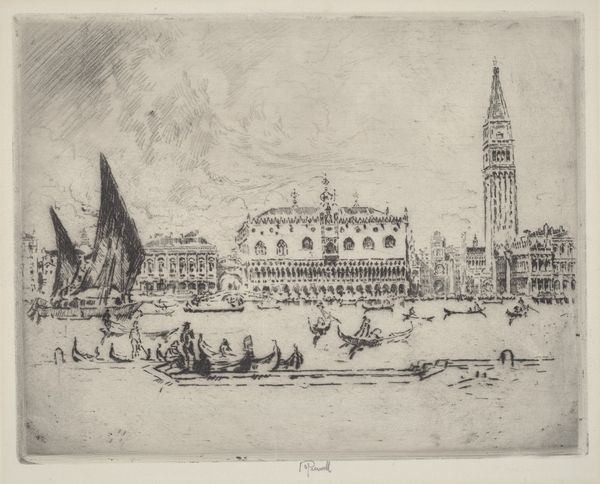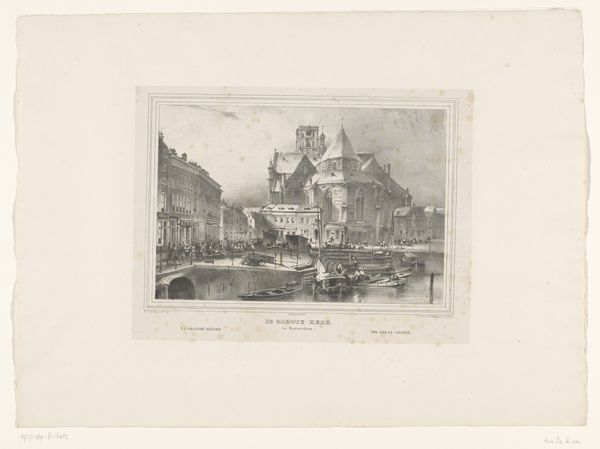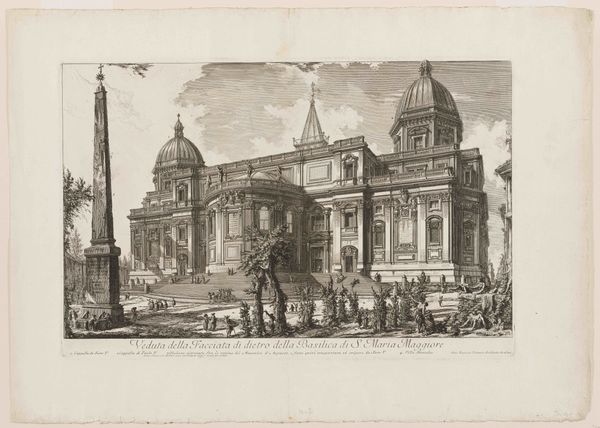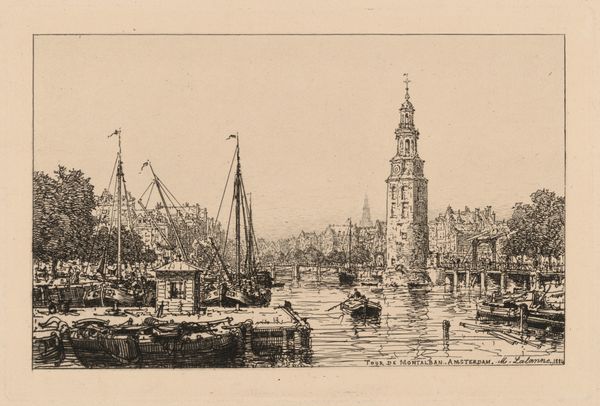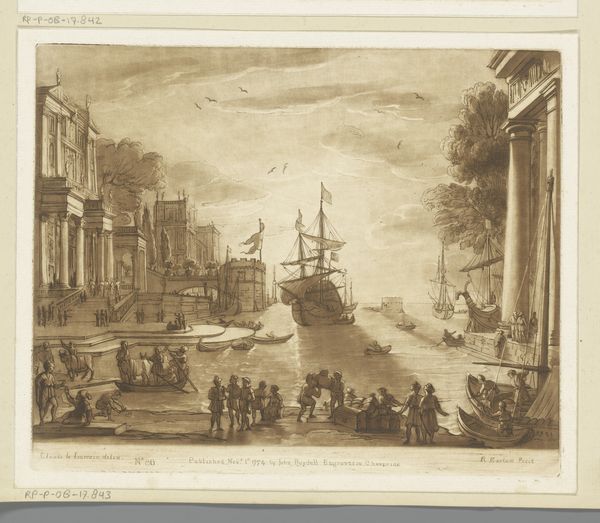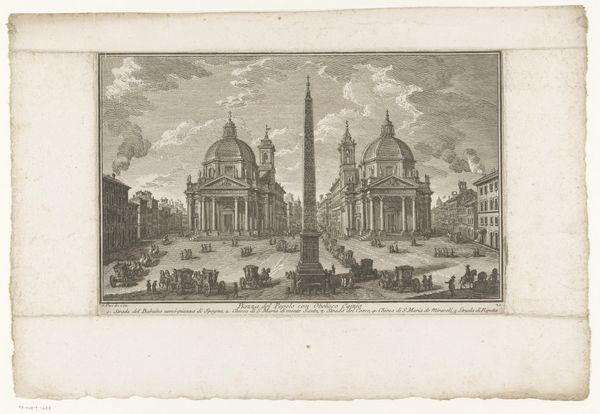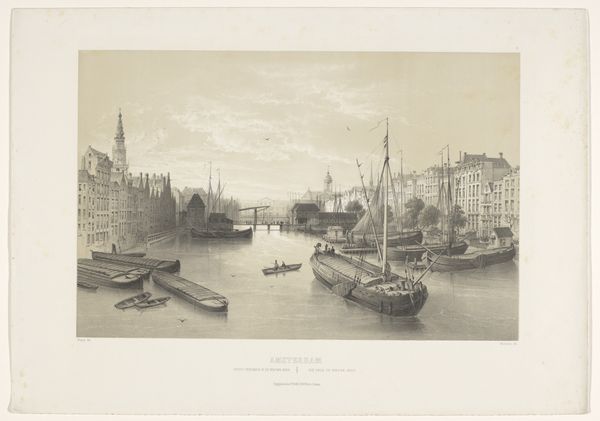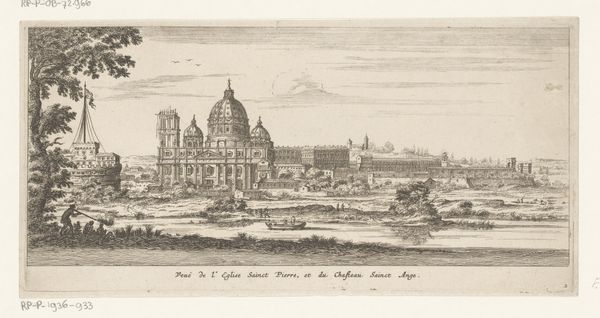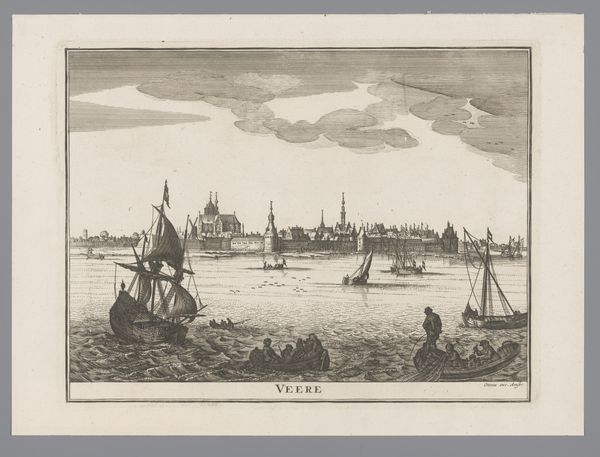
Dimensions: height 418 mm, width 655 mm
Copyright: Rijks Museum: Open Domain
Editor: This is "View of the Santa Maria della Salute in Venice," an etching by Alfred Louis Brunet-Debaines, from 1878. The incredible detail in the buildings and boats gives it an almost photographic quality, yet there’s also a dreamlike feel to it. What symbols jump out at you? Curator: Ah, Venice! The city itself is already a potent symbol, isn't it? A place of beauty and decay, of commerce and intrigue. The Santa Maria della Salute, specifically, was built in the 17th century as a votive offering to the Virgin Mary for deliverance from the plague. Editor: So the church becomes a symbol of hope and resilience after a period of devastation? Curator: Precisely. And think about its Baroque architecture. The curves, the ornamentation – it speaks to an emotional intensity, a release from the austerity that might have preceded it during the plague years. Then, look at the figures populating the scene. What do they suggest? Editor: They seem almost incidental, going about their daily lives with the imposing church looming in the background. A return to normalcy perhaps? Curator: Yes, the rhythm of everyday life resuming. And Brunet-Debaines has chosen etching, a medium that lends itself to both fine detail and subtle gradations of tone, mirroring Venice itself: a surface of shimmering beauty overlaying layers of history and experience. The image holds so much memory! Editor: I hadn’t considered the etching itself as part of the message, that’s really fascinating. It’s a piece layered with symbolic weight, reflecting not just a place, but a collective experience. Curator: Exactly! And that's the power of art, isn't it? To compress complex narratives into a single image, inviting us to decode the symbols and connect with the cultural memory it holds.
Comments
No comments
Be the first to comment and join the conversation on the ultimate creative platform.
